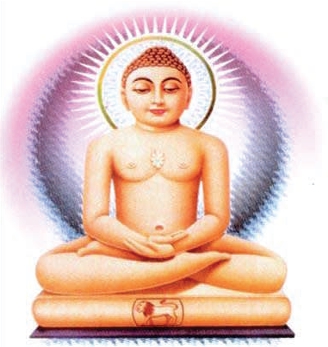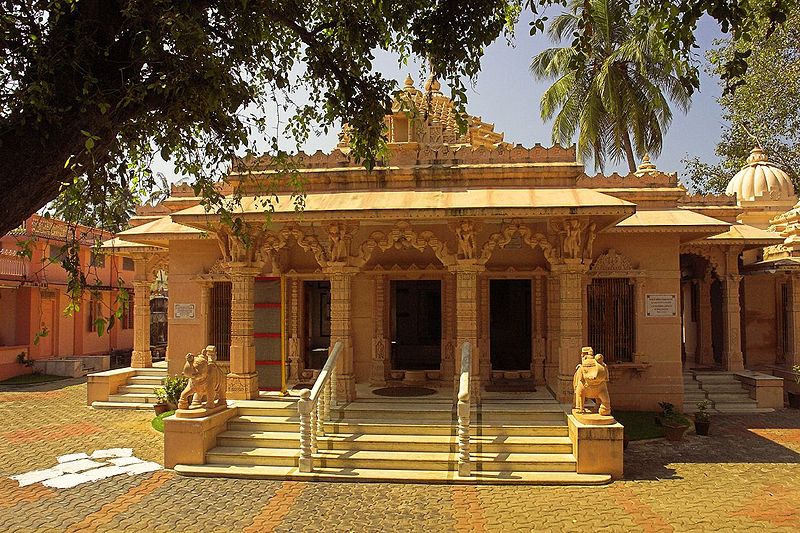
History of Jainism in Kerala
When Jainism made its advent in South India, Kerala was under the rule of many petty chieftains. The Chera (cēra) country, which was not geographically the same as the present-day Kerala, but a minor part of it, with extensions in the Coimbatore area of Tamil Nadu, was supposed to be ruled by a strong dynasty.
The Jaina sources do not say anything about Kerala, but this area might have been treated as part of Tamilakam, as the languages in both the areas were forms of Tamil till the 9th century A.D. Jainism might have spread to Kerala also as well as to other parts of South India. This religion has had vicissitudes during the ages and at present it is simply a minority religion in this area.
From archaeological remains and inscriptions, it is understood that Jainism once flourished in the southern and northern parts of Kerala. In the South i.e., in Kanyakumari district, inscriptions are found as early as the 9th century A.D. and it continued as a venue of Jaina activities for centuries. But due to delimitation, Kanyakumari has been brought under Tamil Nadu and Kerala has, at present, no claim over Kanyakumari Jainism. But the southern part of Kerala was an entrance to the land from the East and from inscriptions found in this district, it may be found that the Jaina communities in this region were connected to their brethren in Tamil Nadu.
On the contrary, Jainism in the northern part of Kerala was related to its counterpart in Karnataka. The route might have been through Kodagu to Sravana-belgola (śravaṇa-beḷgoḷa). That Kerala people took part in sports festivals in Sravana-belgola, is evident from some inscriptions in Cikka Beṭṭa. There is folk literature, both in Malayalam and Kodagu, which mentions a (trade) route from Cannanore of Malabar to Kodagu. The Jaina monks who came to Kerala from Karnataka might have taken this course.

A Jain Temple in the old part of Fort Cochin (Kerala).
Mānandavāḍi of Wynadu appears to be related to Karnataka place names like Nōlaṃbavāḍi, Gangavāḍi etc. The Jaina communities found in Wynadu form the major portion of the settlement of Kerala Jainas, know Kannada and their religious books are all in Kannada language. In Kasargod district, there are some Jaina temples, which are known by the name bastis (< Ka. basadi), as in Karnataka. There are Kannada inscriptions in the Eḍakkal caves of Wynadu. It is understood that these belong to the Hoysaḷa period. These Karnataka affiliations, found in Jainism in the north of Kerala, show that, in that part of the country, the religion was spread by monks who were attached to the Karnataka Jaina church.
The Chera king, Perum-cēral, had the surname Ātan, which, according to some, is the tadbhava of Arhat. But according to the phonological peculiarities of Tamil, this has to be Anikan. This sovereign died observing vaḍakkiruttal, which is similar to the sallēkhanā of the Jainas. Hence, some scholars prefer to think that there were Jainas among the Chera kings. It is fairly well-known that the author of the famous Tamil epic, Cilappatikāram, was Iḷaṅgo, the younger brother of the Chera king, Ceṅkuṭṭuvan, and that he renounced the world and joined the Jaina monastery in Kunavayil (kuṇavāyil), near modern Cranganore.
Kunavayil was one of the important Jaina centers in Kerala around the 5th century A.D. A few inscriptions have been recently discovered from Malabar area, which mention the Kunavayil temple. In some 14th century kāvyās also, we find references to this Jaina centre. One of these, Koka-sandeśam, mentions that the Brahmins would not see the deity of Kunavayil. Many of the Jaina temples were, by this time, converted into Hindu temples. Even though Kunavayil was thus converted, the Brahmins might have had a kind of aversion for the deity of that temple. The names of some such temples converted as Hindu temples are given elsewhere. Jainism had not much of a royal patronage in Kerala. Epigraphical evidences are found for patronizing the Nagercoil temple by Bhūtalavīra Undaya-mārtāṇḍa-varma of erstwhile Travancore dynasty.
Though Jaina inscriptions are not so abundant in Kerala, as in other South Indian States, there are hints that enable us to conclude that Jainism was flourishing in this area also, at one or the other time. The most important of these, is the reference to palli-c-cantam (paḷḷi-c-cantam) grants. The term palli-c-cantam denotes the grant given, free of tax etc., to a palli (paḷḷi). The word palli may denote a Jaina or a Buddhist institution. Since this word is found in clearly Jaina contexts in inscriptions of Tamil Nadu, we may think that the palli-c-cantam grants mentioned in some of the inscriptions might be those made to Jaina institutions.
In some of the inscriptions of Kerala, which relate to grants, the witnesses are mentioned as cālukkal. This word seems to denote a Jaina monk (Māgadhī: śādhu). Their addresses are given as belonging to kottams (koṭṭam). A kottam (< Pkt. koṭṭha) denotes a monk's cell. The catukkal mentioned in many of the inscriptions, might have referred to Jaina monks. If so, it shows that they enjoyed high prestige in the society. In some inscriptions, we find reference to yakshis (yakṣī) or yakshinis (yakṣiṇī). In the Huzur Office plates, we find mention of Yakkiyamma and Māyiyakki. The probability that these were originally sasana-devatas (śāsana-devata) of Tirthankaras (tīrthaṅkara) cannot be ruled out.
Bibliography:
- P.K. Gopalakrishnan, Jainamatam Kēraḷattil, The Government of Kerala, Thiruvanan-thapuram, 1974;
- Assimkumar Chatterji, A Comprehensive History of Jainism, Firma KLM, Calcutta, 1978;
- Ramasvami Iyengar / Sheshagiri Rao, Studies in South Indian Jainism, Vizianagaram Maharaja's College Publication, Vizianagaram, 1922;
- A. Sreedhara Menon, A Survey of Kerala History, S.P.C.S, Kottayam, 1970;
- E. Rapson (Ed), The Cambridge History of India (Vol. I), Chand & Co., Delhi, 1962.